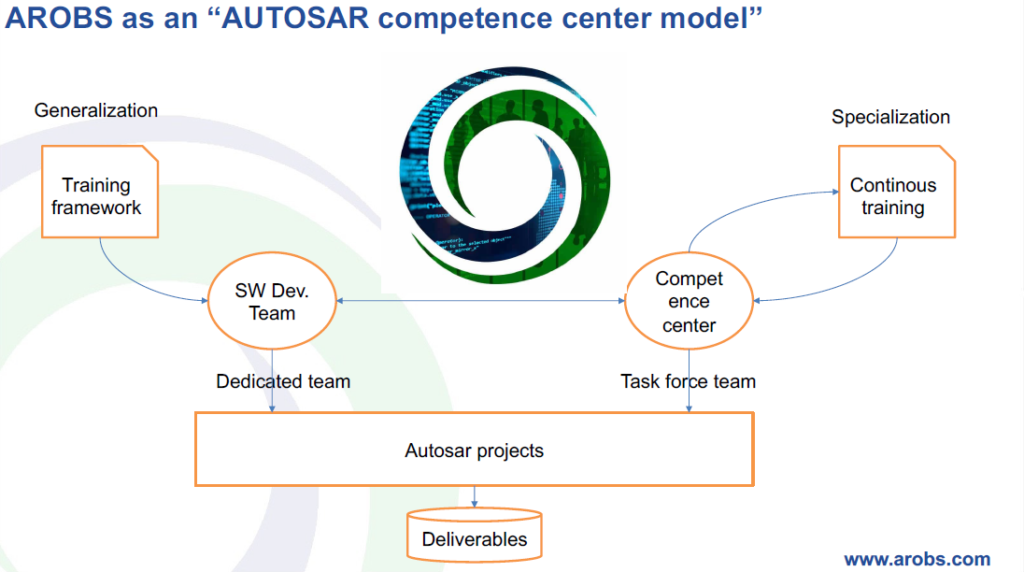What future E/E System Architectures need? – 3 insights from AUTOSARxAHK events
System architecture has seen a major shift given that software development rapidly changed the outlook of the automotive industry. After just a single decade, the conventional, distributed E/E system architecture, based on cross-domain functions, gradually morphed into the need for domain-centralized E/E architecture and, further, into the Zone-based E/E architecture.
The major weakness of the conventional architecture is the lack of scalability since applications are created as monolithic executables. In contrast, the rapid pace of automotive development requires reusable software.
The relevant players of the automotive industry, recognizing the need for scalability and standardization, started partnerships that develop the methodology and structure so much needed for progress.
AUTOSAR is one of the most significant partnerships that bring together stakeholders of the entire supply chain, offering a standardized software framework for the future of mobility.
AUTOSAR and AHK (German-Romanian Chamber of Industry and Commerce) events
Part of creating a common platform is incentivizing collaboration through events. One of the most recent events was organized by AUTOSAR and AHK; the Automotive Software Development for Future E/E System Architectures virtual event had the Romanian market in focus.
What do future E/E system architectures need from software companies?
In the following section, we gathered three key insights from the event.
1. Scaling knowledge – companies need an AUTOSAR competence center
AROBS’ Head of Automotive, Silvan Morariu, who presented alongside representatives of top automotive developers – discussed the necessity for companies to learn from their own AUTOSAR best practices and bring the know-how to a greater level.
“At AROBS we are actively working on creating an AUTOSAR competence center to structure and scale our know-how to all our over 400 automotive engineers to provide the highest quality deliverables to clients.”
Scaling knowledge – the steps
The process of transforming unstructured company knowledge into a competence center is complex and gradual. First, the automotive engineers attend basic AUTOSAR (training framework) and hands-on training using dedicated tools; later, they get the chance to work on actual AUTOSAR projects under the guidance of experienced engineers. Following the successful completion of these phases, they are ready to do specialized work on AUTOSAR based projects without external guidance.
2. Better understanding – zone architecture is like the human architecture
As the industry is getting closer to the wide adoption of the 3rd level of autonomous driving, the architecture of the vehicle is starting to resemble the humans with real-time reactions to their environment.
Using an insightful analogy, one of the speakers presented zone architecture differently. Zone architecture could be understood in similar ways as we are understanding the functions of humans, where:
- non-intelligent sensors are the five senses of the human (to see, to smell, to hear, the sense of touch, the taste),
- the vehicle computer and partial zone ECUs are correspondents to the brain,
- the actuator ECUs and non-intelligent actuator are the muscular system,
- the service-oriented communication, high-speed backbone, and Zone ECUs correspond to the spine,
- and the signal/BPO based communication correlates to the nerves.
Even if the Zone architecture is much more complex than the conventional E/E architecture, AUTOSAR enables the transition toward this next level of complexity.
3. Focus in the right direction – the automotive market’s direction is loud and clear
While mobility is still highly dependent on fossil fuels, we are already witnessing the gradual shift towards efficiency and electrification.
Other key focuses of the market are connectivity and digitalization – to enhance the interaction between the vehicle and its environment.
Similarly, Autonomous driving and personalization are also at the center of attention for the vehicles of the future.
At AROBS, we deliver engineering services based on classical and adaptive AUTOSAR alike. With an AUTOSAR competence center, we can scale our know-how and, therefore, rapidly respond to the market and our partners’ needs.
Looking for a digital upgrade?
Image source: Pixabay, Freepik
Read our recent blog posts






